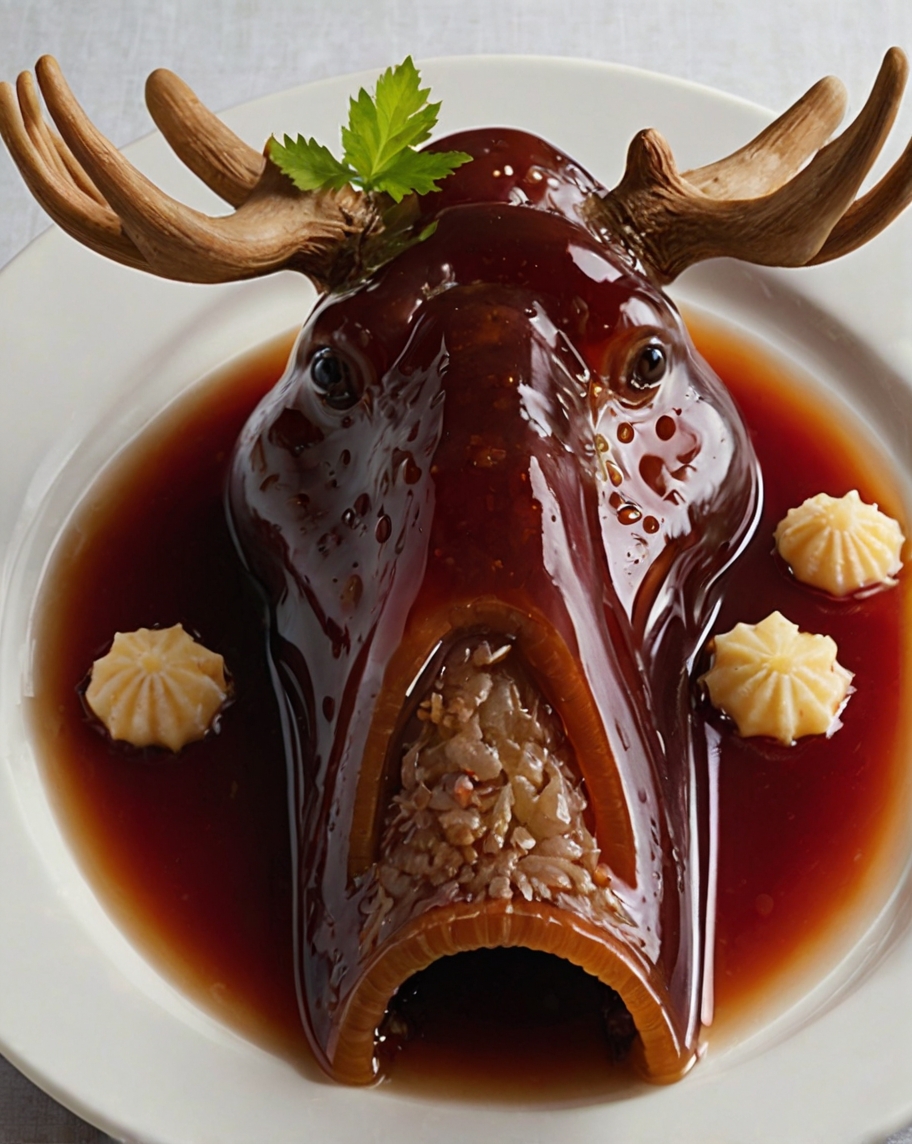Food is an integral part of every culture. It brings people together, tells stories, and offers a glimpse into a country’s history and traditions. While many of us stick to familiar dishes, there is an entire world of bizarre, unusual, and sometimes downright strange foods that exist. These unique delicacies may make you raise an eyebrow or squirm in your seat, but they’re worth exploring. Whether you’re an adventurous eater or a curious observer, these bizarre foods will undoubtedly fascinate you.
In this blog post, we’re going to take you on a global journey through the top 10 most bizarre foods from around the world. Get ready for some of the weirdest dishes you’ve ever heard of, ranked from 10 to 1!
10. Escamoles (Mexico) – The Insect Caviar
If you’ve ever been to Mexico, you might have heard of escamoles, a dish made from ant larvae. It’s often referred to as “insect caviar” due to its creamy texture and delicate flavor. Escamoles are typically harvested from the roots of agave plants and are considered a delicacy in Mexico.
This dish is usually sautéed with butter, garlic, and spices, giving it a rich flavor profile. Despite its unusual ingredients, escamoles are not only a treat for adventurous eaters but are also rich in protein and vitamins. Many people compare the taste to a combination of nuts and cottage cheese.
While escamoles are not commonly found outside of Mexico, they remain a prized delicacy in certain parts of the country, often enjoyed with tortillas or as part of a larger feast.

9. Balut (Philippines) – The Fertilized Duck Egg
Next up on our list of bizarre foods is balut, a traditional Filipino street food that will challenge even the most daring eaters. Balut is a fertilized duck egg that has been boiled and eaten in its partially developed state. Inside the shell, you’ll find a duck embryo with feathers, beak, and bones.
While the idea of eating a partially formed bird might sound horrifying to some, balut is considered a hearty and nutritious snack by many in the Philippines. It’s typically enjoyed with a pinch of salt, pepper, and a splash of vinegar, offering a unique combination of savory flavors.
Though it may be shocking to some, balut is widely loved in the Philippines and other Southeast Asian countries and has even been known to cure hangovers!
8. Hákarl (Iceland) – Fermented Shark Meat
Icelanders are known for their love of adventurous and unique foods, and hákarl (fermented shark meat) is perhaps the most bizarre example. Made from the Greenland shark, which is toxic when fresh due to its high levels of urea and trimethylamine oxide, hákarl undergoes a fermentation process that can take months.
Once the shark meat has been properly fermented and hung to dry, it develops a pungent aroma and a strong, fishy taste that many outsiders find challenging. The texture is tough, and the smell is overwhelming, but for Icelandic locals, hákarl is a cherished part of their culinary history.
Though it’s often served as a snack or appetizer, hákarl is best enjoyed with a shot of brennivín, a local schnapps that helps mask its strong flavor. If you ever find yourself in Iceland, be sure to give it a try—but don’t say we didn’t warn you!
7. Century Egg (China) – The Preserved Delicacy
The century egg, also known as a thousand-year-old egg or black egg, is a preserved Chinese delicacy that has been around for centuries. This food is made by preserving duck, chicken, or quail eggs in a mixture of clay, ash, quicklime, and rice husks for several weeks to months. The result is a black or dark green egg with a strong, pungent odor.
When you crack open a century egg, the yolk has turned a deep greenish-black color, and the white becomes a translucent, dark jelly-like substance. The taste is intense, with a tangy, salty, and sometimes slightly sulfuric flavor.
Century eggs are often eaten with congee (a rice porridge), pickled ginger, or as part of a cold dish. While they may be an acquired taste for many, they hold a special place in Chinese cuisine.
6. Surströmming (Sweden) – The Stinky Fermented Herring
Surströmming, or fermented herring, is a notorious dish that is known for its incredibly strong and offensive odor. This Swedish food is made by fermenting Baltic Sea herring in a tin can, which is then left to sit for months. The result is a pungent, sour, and salty fish that is so smelly it has become the subject of numerous challenges and viral videos.
While the smell of surströmming can be overwhelming, the taste is less offensive for those who have acquired the flavor. Surströmming is typically eaten with thin flatbreads or crackers, often alongside onions, sour cream, and potatoes to balance the intensity of the fish.
If you ever plan on trying surströmming, be sure to do it outdoors, as the odor can linger for a long time after opening the can!
5. Casu Marzu (Italy) – The Maggot Cheese
The infamous casu marzu hails from the island of Sardinia, Italy, and is renowned for its unusual preparation involving live maggots. This traditional cheese is made from sheep’s milk and undergoes fermentation by allowing cheese flies to lay eggs inside the cheese. Once the eggs hatch, the larvae (maggots) begin to digest the cheese, which leads to a soft, spreadable texture.
Casu marzu is often served with the live maggots still wriggling inside the cheese. While the thought of consuming live maggots might make you squirm, enthusiasts claim that it has an intense, creamy flavor with a unique tang.
Though it is banned in the European Union due to health concerns, casu marzu is still made and eaten in Sardinia, where it’s considered a cultural delicacy.
4. Fugu (Japan) – The Poisonous Pufferfish
Fugu, the infamous Japanese delicacy, is made from the highly toxic pufferfish, which contains a potent neurotoxin called tetrodotoxin. This toxin is deadly if consumed in even small amounts, and only licensed chefs with special training are allowed to prepare it.
Despite the risks, fugu is considered a luxurious and prestigious dish in Japan, often served as sashimi or in hot pots. The fish is meticulously prepared to ensure that all toxic parts are removed, leaving only the safe, edible flesh behind.
Fugu is a symbol of daring culinary adventure, and those who eat it often do so for the thrill of consuming such a dangerous dish. For those brave enough to try it, the experience is both exhilarating and unforgettable.
3. Tuna Eyeballs (Japan) – An Unusual Seafood Snack
Tuna eyeballs are a common snack in Japan, where they’re often sold in supermarkets and fish markets. As you might expect, they’re the actual eyeballs of a tuna, typically served boiled, steamed, or deep-fried. While the idea of eating an eyeball might sound strange to most, they’re quite popular in Japanese cuisine due to their unique texture and flavor.
The taste of tuna eyeballs is mild and slightly fishy, with a gelatinous texture that might remind you of eating a soft, chewy delicacy. The large size of the eyeball can be intimidating at first, but once you get past the appearance, it’s a surprisingly tasty treat.
If you’re in Japan and looking to try something truly bizarre, tuna eyeballs are a must-try!
2. Sannakji (South Korea) – Live Octopus
Sannakji is a dish that’s not for the faint of heart. This traditional Korean delicacy involves consuming a live octopus that has been chopped into small pieces and served immediately on the plate. The tentacles are still moving, making the dish incredibly unsettling for some.
Though sannakji is often served with a light sesame oil and salt dressing, the real draw of this dish is the experience of eating it while the tentacles continue to squirm. The chewy texture and slight sea flavor are both unique and thrilling for those who enjoy novelty foods.
While sannakji is widely consumed in South Korea, eating it can be risky as the tentacles are known to pose a choking hazard if not properly chewed.
1. Jellied Moose Nose (Canada) – The Ultimate Weird Food
And finally, the number one most bizarre food on our list is jellied moose nose from Canada. This dish, a traditional part of the Canadian Inuit and First Nations cuisine, is exactly what it sounds like—moose nose that has been boiled, cooled, and turned into a jelly-like substance.
The preparation involves simmering the moose nose (including skin, cartilage, and bones) for hours until it’s tender. The resulting meat is then cooled in its own broth to form a gelatinous texture. Often, jellied moose nose is served as a cold appetizer or snack.
While it may seem strange, this dish has been enjoyed by generations of Canadians as a means of preserving and utilizing every part of the animal. For those with a strong stomach and a taste for the unusual, jellied moose nose is an unforgettable experience.
Conclusion
The world of bizarre foods is vast and varied, with each country offering a unique culinary experience that might make you question your food choices. From fermented shark meat to live octopus, these dishes provide an opportunity to push the boundaries of your taste buds. If you ever find yourself in one of these countries, be sure to keep an open mind and dive into the local cuisine—you might just find a new favorite dish… or not!
Whatever the outcome, these bizarre foods represent a fascinating part of the world’s culinary diversity. Bon appétit, or as they say in Iceland, “Godisfiskur”!





Leave a Reply